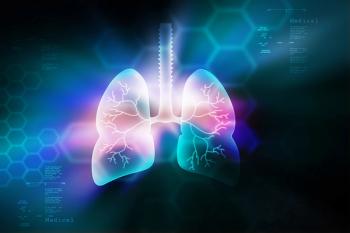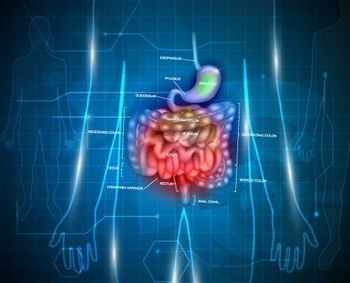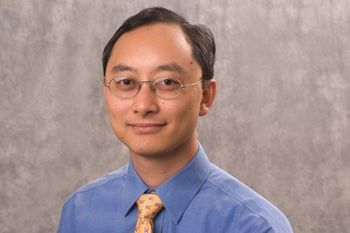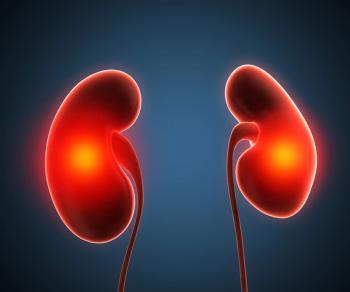
- ONCOLOGY Vol 16 No 9
- Volume 16
- Issue 9
Multiple Myeloma:Role of Allogeneic Transplantation
An estimated 14,600 new cases of multiple myeloma will be diagnosed in the United States in 2002. Multiple myeloma remains an incurable disease despite significant improvements in complete response rates and overall
ABSTRACT: An estimated 14,600 new cases of multiple myeloma will be diagnosed in the United States in 2002. Multiple myeloma remains an incurable disease despite significant improvements in complete response rates and overall survival through the use of autologous stem cell transplantation. Allogeneic transplantation offers the advantage of a tumor-free graft and a graft-vs-myeloma effect but has been associated with a high mortality rate from transplant-related complications-primarily graft-vs-host disease (GVHD). As immunotherapy for patients with relapsed myeloma, donor lymphocyte infusion has resulted in response rates of over 50%, but many of these responses are not durable. In addition, donor lymphocyte infusion is associated with a significant risk of moderate-to-severe GVHD. In an attempt to decrease the high transplant-related mortality of conventional allogeneic transplants and to employ the proven efficacy of immunoreactive donor T lymphocytes, the use of nonmyeloablative transplants or "mini-transplants" is increasing. This approach has succeeded in significantly reducing transplant-related mortality but still may not be sufficient in producing long-term remissions or cures in myeloma patients. A combination of an autologous transplant (to achieve maximal cytoreduction) and a mini-transplant with donor lymphocyte infusion (for the immunoablative effect of alloreactive T lymphocytes) followed by maintenance therapy (thalidomide [Thalomid], steroids, cytokines, vaccines) for long-term immunomodulation is being investigated as a potential cure for this challenging disease. [ONCOLOGY 16:1268-1276, 2002]
Pretransplant Chemotherapy
Conventional chemotherapy regimens in this setting have beenstagnant for many years; the preferred initial regimen for potential transplantpatients has long been infusional vincristine and doxorubicin with oraldexamethasone for 3 to 4 months.[2] Alkylator-based chemotherapy regimens suchas MP (melphalan [Alkeran], prednisone) or VBMCP (vincristine, carmustine [BiCNU],melphalan, cyclophosphamide [Cytoxan, Neosar], prednisone) represent othercommonly used standard regimens for initial treatment.[3,4]
In previously untreated patients, response rates with each ofthese regimens range from 50% to 60%, with comparable median survivals.[5] Themajor toxicity of alkylator-based therapy is myelosuppression, which may resultin prolonged cytopenias and/or myelodysplasia/acute leukemia.[6,7] In addition,alkylator-based chemotherapy damages the stem cell compartment, decreasing theability to collect adequate peripheral blood stem cells. Hence, alkylator-basedchemotherapy may be more suitable for patients who are not considered candidatesfor transplantation.
A recent report from the Mayo Clinic has demonstrated thatthe combination of thalidomide (Thalomid) and dexamethasone pulsing resulted inresponse rates exceeding 70%.[8] The benefit of maintenance therapy is as yetuncertain. A number of poor prognostic factors associated with a short survivaland/or inferior response to chemotherapy have been identified. These includeelevated C-reactive protein and beta-2-microglobulin levels, abnormalitiesinvolving chromosome 13, increased soluble interleukin (IL)-6 receptor levels,high plasma cell labelling index, and high bone marrow microvessel density.
Autologous Stem Cell Transplantation
The use of high-dose therapy with autologous hematopoieticstem cell transplantation has improved outcomes in patients with newly diagnosedmultiple myeloma. A randomized French trial of 200 newly diagnosed patientsunder 65 years old conclusively demonstrated that high-dose therapy withautologous hematopoietic stem cell transplant was superior to conventionaltherapy. Rates of overall response (81% vs 57%), complete remission (22% vs 5%),5-year event-free survival (28% vs 10%), and overall survival (52% vs 12%) wereall superior in the transplant group (all statistically significant, P < .05).[9]
Investigators at the University of Arkansas reported theresults of a pair-mate analysis comparing VAD chemotherapy (vincristine,doxorubicin [Adriamycin], dexamethasone) to tandem high-dose therapy withautologous hematopoietic stem cell transplant. They, too, showed superiorresults in the high-dose therapy group (event-free survival: 49 vs22 months, overall survival: 62+ vs 48 months).[10]
Thus, high-dose therapy with autologous hematopoietic stemcell transplant is now considered the standard of care for newly diagnosedmultiple myeloma patients. For patients younger than 78 years (per Health CareFinancing Administration guidelines), an autologous peripheral blood stem celltransplant should be considered as consolidation of induction therapy, if thereare no significant comorbidities precluding this option. It is preferable thathematopoietic stem cells be collected before exposing the patient to alkylatingagents and/or prolonged periods (> 12 months) of chemotherapy.
Tandem high-dose therapy with autologous stem cell transplanthas shown improved event-free and overall survival in nonrandomizedstudies,[11-13] and three randomized trials comparing single to tandemtransplants are awaiting final analyses. Even with tandem transplant, a plateauon survival curves has not been achieved. Although approximately 50% of patientswho undergo high-dose therapy are alive at 5 years, the relapse rate continuesto increase over time.
In contrast to these studies, a retrospective SpanishRegistry study in 77 patients with mutliple myeloma (who were deemedtransplant-eligible but who received conventional chemotherapy) demonstrated a5-year median survival rate similar to that seen in the above trials.[14] Thus,patient selection may play an important role in response and survival withdifferent treatment options.
Allogeneic Transplantation
As suggested above, there does not appear to be a plateau indisease-free survival after high-dose therapy with autologous hematopoietic stemcell transplant, indicating that cures even with tandem autologoustransplantation are unlikely. This may be due to either infusion of stem cellgrafts contaminated with myeloma cells or the inability to eradicate minimalresidual disease. In an attempt to avoid tumor cell contamination in autografts,three different groups have studied the use of highly purified CD34+ cells(positive selection) to support single or tandem high-dose therapy. However,these trials have failed to demonstrate a significant improvement inprogression-free or overall survival.[15,16,16a]
Allogeneic transplantation offers two advantages: the absenceof tumor-contaminating grafts and the benefit of a graft-vs-myelomaeffect.[16,17] However, allogeneic transplant is an option for a small minorityof patients (5%-10%) who have human leukocyte antigen (HLA)-compatible donorsand are under age 60.
EBMT Registry
The largest experience in allogeneic transplant data wasreported by the European Group for Blood and Marrow Transplantation (EBMT). Theyinitially reported on 266 patients with a 51% complete response, an overalltreatment mortality rate of approximately 40%, and actuarial survival rates of30% at 4 years and 20% at 10 years. An update of the EBMT database in over 600patients showed complete remission rates of 15% (by stringent criteria) with atransplant-related mortality of 20% (1994-1998 data). The relapse rate afterthe first 2 years was small, but late relapses continue to occur.[18]
Single-Institution Trials
The largest single-institution studies have been reported bygroups in Seattle (Bensinger et al) and Arkansas (Mehta et al). Bensinger et alreported the results of a trial in which 106 patients underwent allogeneictransplant.[19] Approximately 70% of these patients had chemotherapy-resistantdisease, and the majority were very heavily pretreated. The investigatorsobserved a 50% treatment-related mortality within the first 100 days and a 57%overall treatment-related mortality at 1 year. At a median follow-up of 4 years,23% were alive, but only 16% were progression-free.
These results are similar to findings reported by theArkansas group in patients with similar characteristics.[20] Table 1 showsresults of single-institution trials with allogeneic transplants in mutliplemyeloma.[18-23] Again, late relapses have been observed.
Larger Studies
Alternative donor transplants have equally poor outcomes asthose of HLA-identical sibling transplants. Ballen et al reported the NationalMarrow Donor Program experience in 71 myeloma patients undergoing unrelateddonor transplant.[21] They reported a 40% transplant-related mortality. Therelapse rate was 35% at 3 years, and only 17% were alive at 5 yearsposttransplant. Similarly poor results have been reported utilizing alternativedonors by the Seattle group.[19]
One of the debates surrounding the outcome of allogeneictransplants concerns the fact that they have routinely been performed in heavilypretreated patients, often after autologous transplant. This argument is notsupported by the North American Intergroup trial (S9321), which allowedallogeneic transplantation in patients under 55 who had HLA-identical siblingdonors. Patients underwent allogeneic transplant following four cycles of VADand high-dose cyclophosphamide (4.5 g/m²).This arm of the study was prematurely closed when the transplant-relatedmortality reached 41% in the first 36 patients (R. Kyle, personalcommunication).
Case-matched comparative studies between allogeneic andautologous transplantation have been reported: All have shown superior outcomeswith autologous transplant, given a higher transplant-related mortalityassociated with allogeneic transplant.[24-27] Of interest, Gahrton et alcompared the outcomes of syngeneic (n = 25), allogeneic (n = 125), andautologous (n = 125) transplantation in the EBMT database. The overall4-year survival from transplant with syngeneic transplantation was 77%, withautotransplantation, 46%, and with allotransplantation, 31%.[24]
RecommendingAllogeneic Transplant
The selection of patients for allogeneic transplant entails adifficult clinical decision. Heavily treated patients and those withchemotherapy-resistant disease have a uniformly dismal outcome. Newly diagnosedpatients with chemotherapy-sensitive disease may derive long-term remissions andpotential cures. When the clinician is counseling his or her patient, it may bedifficult to recommend the allogeneic approach, with its 20% to 50% earlytransplant-related mortality and less than 30% 5-year survival (compared withthe superior data for autologous transplantless than 2% transplant-relatedmortality and projected 5-year median survival of over 50%). Perhaps patientswith extremely poor prognostic features, chromosome 13 deletions, and elevatedbeta-2-microglobulin may be candidates for allogeneic transplant.
Donor Lymphocyte Infusion
It has become increasingly apparent that a significant partof the curative potential of allogeneic transplants is related to alloreactive Tlymphocytes with activity against tumor cells. This is particularly true forB-cell malignancies and chronic myelogeneous leukemia, which is the prototype ofallogeneic T-cell immunoreactivity against tumor cells. The most compellingclinical evidence consists of (1) higher relapse rates in syngeneic transplantswith no graft-vs-host disease (GVHD); (2) the increased relapse rate in T-cell-depletedallografts resulting in reduced GVHD; and (3) the efficacy of donor lymphocyteinfusions resulting in complete remission in nearly 70% to 80% of patients withcytogenetic relapse.
Clinical Trials
The effectiveness of donor lymphocyte infusion in inducingremissions in recurrent disease following allogeneic transplant has beendemonstrated in most hematologic malignancies and some solid tumors, withsuccess rates ranging from approximately 10% to 15% in acute lymphocyticleukemia to 70% to 80% in chronic myelogenous leukemia.[28] This principle hasalso been proven in patients who have relapsed after transplant from anunrelated donor.[29]
In multiple myeloma, it has been proven that immunoreactive Tlymphocytes can induce clinical remissions in patients who have relapsedfollowing allogeneic transplant.[16,17] The largest trial to demonstrate theefficacy of donor lymphocyte infusion in multiple myeloma was conducted byLokhorst et al,[17] who reported on 52 such procedures in 27 patients withrelapsed disease. A total of 14 patients responded (52%), including six completeresponses (22%). The median survival for the whole group was 18 months;five patients remained in remission at a median of 31 months post-donorlymphocyte infusion. Nevertheless, the procedure was associated with asignificant incidence of GVHDacute cases in 56% and chronic cases in 26%.
Similar findings were updated by this group, who reporteddata on 39 patients receiving 68 donor lymphocyte infusions, with acute GVHDseen in 47% of patients and chronic GVHD in 33%.[30] Moreover, GVHD remains aproblem after donor lymphocyte infusion in myeloma. Favorable prognostic factorsreported by Lokhorst and colleagues were a T-cell dose exceeding 1.1 x108cells/kg, response to reinduction chemotherapy before donor lymphocyte infusion,and chemotherapy sensitivity prior to allotransplant. In an attempt to reducethe drawback of GVHD, Alyea and coworkers infused a purified donor lymphocytegraft consisting predominantly of CD4+lymphocytes after depleting CD8+lymphocytes.[31] The treatment-related mortality was only 3%, and five of sixrelapsed myeloma patients responded.
Further Considerations
Allogeneic transplant in multiple myeloma is associated withexcessive toxicity, with transplant-related mortality ranging from 20% to 50%.In addition, even in the most favorable group of patientsie, those who haveachieved complete remission prior to transplant, are less than 1 year fromdiagnosis, and have low beta-2-microglobulin levelsover 50% will relapsewithin 5 years. Thus, it remains to be proven whether allogeneic transplantalone is curative.
As discussed above, donor lymphocyte infusions asimmunotherapy for patients with relapsed disease results in response rates ofover 50%. Unfortunately, many of these responses are not durable. In addition,donor lymphocyte infusion is associated with a significant risk ofmoderate-to-severe GVHD.
Nonmyeloablative Transplants
Due to the excessively high transplant-related mortalityassociated with conventional allogeneic transplants and the proven efficacy ofimmunoreactive donor T lymphocytes in inducing a graft-vs-myeloma effect, thecurrent trend is to utilize nonmyeloablative transplants("mini-transplants") for many hematologic malignancies includingmultiple myeloma. The basis of the mini-transplant is to provide sufficientimmune suppression to allow donor engraftment and subsequent graft-vs-tumoreffect.[32]
Preliminary data have shown a high rate of complete remissionafter nonmyeloablative transplantation, even in heavily treated patients withresistant disease. Atthe American Society of Hematology meeting in December 2000, a large number ofabstracts described nonmyeloablative therapy using different conditioningregimens. Table 2 summarizes some of these trials.[33-39]
EBMT Data
The largest study of multiple myeloma patients undergoingnonmyeloablative transplants was reported by Lalancette et al, who presented theEBMT results in 50 patients.[33] All patients engrafted, and 20 of 27 evaluablepatients achieved 95% donor engraftment. A new complete response was observed in16 patients, continuous complete response in 1, new partial response in 7, andcontinuous partial response in 12.
Transplant-related mortality at 1 year was 32%, and therelapse incidence at 1 year was 13%.[33] Actuarial survival at 1 and 2 years was54% and 40%, respectively. Patients with good-risk features (complete responseor first or second partial response) had a 1-year overall survival,transplant-related mortality, and relapse rate of 83%, 13%, and 11%, compared tothe poor-risk group (beyond a second partial response or refractory), with 25%,67%, and 20%, respectively. Again, unfortunately, many of the observed responseswere not durable.
Arkansas Study
Another recently reported series from the Arkansas group on16 poor-risk multiple myeloma patients who received a nonmyeloablativeconditioning regimen (with melphalan, 100 mg/m²)followed (in 14 patients) by donor lymphocyte infusiongiven either to attainfull donor chimerism or to eradicate residual diseasehad a 75% overallresponse rate with five sustained complete responses at 1-year follow-up.[33]However, 10 patients developed acute GVHD, and most of this group progressed tochronic GVHD. Three patients died of GVHD complications.
Although currently very popular within the transplantcommunity, nonmyeloablative transplants are probably not sufficient to producecures in multiple myeloma patients. The transplant-related mortality is lowerthan that observed with conventional allogeneic transplant but remainssubstantially higher than that seen after autologous transplant (10%-67%).Even with donor lymphocyte infusionwhether preemptive in high-risk patientsor for persistent disease/relapsedoes not produce durable remissions in themajority of patients.
Seattle Study
The Seattle group reported an intriguing pilot trial ofautologous transplant (with melphalan, 200 mg/m²)followed by nonmyeloablative allogeneic transplant.[38] This appealing strategymaximizes tumor cytoreduction with the autologous transplant to optimize theimmunoablative graft-vs-myeloma effect and eradicate minimal residual disease. Atotal of 32 patients completed the planned two transplants, and nearly 100%donor chimerism was achieved by day 56. The complete response rate was 53%, andthe transplant-related mortality, 16%. The median follow-up, however, was only202 days. The Eastern Cooperative Oncology Group has initiated amulti-institutional protocol (E4A98) utilizing the same approach.
PosttransplantMaintenance Therapy
The efficacy of posttransplant maintenance therapy has notyet been established. A variety of treatments have been utilized, includinginterferon-alpha, chemotherapy, corticosteroids, and immunotherapy.[12,13,40]There is growing interest in thalidomide, with or without corticosteroids, asmaintenance therapy, based on the cytoreductive activity of both types of agentsas monotherapy. Thalidomide has been known to have activity in relapsed multiplemyeloma, but has not been tested as posttransplant maintenance therapy.
Immunomodulation
An area of intense investigational interest is posttransplantimmunomodulation, achieved via anti-idiotype vaccines, DNA vaccines, or idiotype-pulseddendritic cells. Studies of anti-idiotype vaccines have demonstrated the abilityto generate humoral and/or cellular responses in some patients aftertransplantation. Whether this type of immune enhancement will result in aclinically relevant outcome remains to be proven.
Another immunomodulation modality involves the use oflymphocyte and/or dendritic cell stimulatory cytokines, such as IL-12, IL-2 (Proleukin),or granulocyte-macrophage colony-stimulating factor (GM-CSF, Leukine), eitheralone or in combination. These studies are in their infancy.
Conclusions
Multiple myeloma remains a challenge for the oncologist dueto the low proliferative rate of clonal plasma cells resulting in theprogressive development of chromosomal abnormalities. These malignant plasmacells demonstrate native chemotherapy resistance even at the time of diagnosis,and this, in turn, accounts for the extremely low complete response rates (5%-10%)to conventional induction therapy.
High-dose therapy with autologous hematopoietic stem celltransplantation results in improved response rates as well as increasedevent-free and overall survival. However, no plateau is appreciated even aftertandem transplant. Allogeneic transplants are promising but associated withexcessive transplant-related mortality. Nonmyeloablative transplant (mini-allograft)trials have been encouraging, showing prompt allogeneic engraftment and reducingtransplant-related mortality, but longer follow-up is needed to compare survivaldata with other standard therapies.
The use of donor lymphocyte infusion has shown impressiveresponse rates even in refractory/relapsed myeloma, but GVHD seems to be asignificant factor contributing to transplant-related mortality in this setting.Ultimately, a treatment strategy that utilizes maximal cytoreduction (autologoustransplant), immunoablation by alloreactive T lymphocytes (nonmyeloablativetherapy with donor lymphocyte infusion) followed by long-term immunomodulationto prevent disease recurrence (thalidomide with or without corticosteroids,cytokines, or vaccines) may provide the optimal control and potential cure ofthis challenging disease. In addition, we need to more fully understand theclinical implications of different prognostic factors, and use this informationto stratify suitable treatment approaches to individual patients.
References:
1. Jemal A, Thomas A, Murray T, et al: Cancer statistics,2002. CA Cancer J Clin 52:23-47, 2002.
2. Alexanian R, Barlogie B, Tucker S: VAD-based regimens asprimary treatment for multiple myeloma. Am J Hematol 33:86-89, 1990.
3. Pavlovsky S, Saslavsky J, Tezanos DM, et al: A randomizedtrial of Melphalan and prednisone vs melphalan, prednisone, cyclophosphamide,CCNU and vincristine in untreated multiple myeloma. J Clin Oncol 2:836-840,1984.
4. Cooper M, McIntyre O, Propert K, et al: Single, sequentialand multiple alkylating therapy for multiple myeloma. J Clin Oncol4:1331-1339, 1986.
5. Alexanian R, Dimopoulos MA: Management of mutliple myeloma. Semin Hematol 32(1):20-30, 1995.
6. Tricot G, Jagannath S, Vesole D, et al: Peripheral bloodstem cell transplant for multiple myeloma:Identification of favorable variablesfor rapid engraftment in 225 patients. Blood 85:588, 1995.
7. Govindarajan R, Jagannath S, Flick JT, et al: Precedingstandard therapy is the likely cause of MDS after autotransplants for multiplemyeloma. Br J Haematol 95:349-53, 1996.
8. Rajkumar SV, Hayman S, Fonseca R, et al: Thalidomide plusdexamethasone (Thal/Dex) and thalidomide alone (Thal) as first line treatmentfor newly diagnosed multiple myeloma (MM) (abstract 722). Blood 96(suppl1):168a, 2000.
9. Attal M, Harousseau JL, Stoppa AM, et al: A prospectiverandomized trial of autologous bone marrow transplantation and chemotherapy inmultiple myeloma. Intergroupe Francais du Myelome. N Eng J Med 335:91-97,1996.
10. Barlogie B, Jagannath S, Vesole DH, et al: Superiority oftandem autologous transplantation over standard therapy for previously untreatedmultiple myeloma. Blood 89:789-793, 1997.
11. Barlogie B, Jagannath S, Desikan KR, et al: Total therapywith tandem transplants for newly diagnosed multiple myeloma. Blood 93:55-65,1999.
12. Desikan R, Fassas A, Munshi N, et al: Intensiveconsolidation therapy after tandem transplants further improves the outcome ofmultiple myeloma patients (abstract 730). Blood 96(suppl 1):169a, 2000.
13. Attal M, Harousseau JJ, Facon TT, et al: Single versusdouble transplantation in myeloma: A prospective randomized trial of theIntergroupe Français du Myeloma (IFM) (abstract 2393). Blood96(suppl 1):557a, 2000.
14. Blade J, San Miguel JF, Fontanillas M, et al: Survival ofmultiple myeloma patients who are potential candidates for early high-dosetreatment intensification/autotransplantation and who were conventionallytreated. J Clin Oncol 14:2167-2173, 1996.
15. Vescio R, Schiller G, Stewart AK, et al: Multicenterphase III trial to evaluate CD34+ selected versus unselected autologousperipheral blood progenitor cell transplantation in multiple myeloma [seecomments]. Blood 93:1858-1868, 1999.
16. Tricot G, Gazitt Y, Leemhuis T, et al: Collection, tumorcontamination, and engraftment kinetics of highly purified hematopoieticprogenitor cells to support high dose therapy in multiple myeloma. Blood91:4489-4495, 1998.
16a. Lemoli R, Martinelli G, Zamagni E, et al: Engraftment,clinical and molecular follow-up of patients with multiple myeloma who werereinfused with highly purified CD34 + cells to support single or tandemhigh-dose chemotherapy. Blood 95:2234-2239, 2000.
17. Lokhorst HM, Schattenberg A, Cornelissen JJ, et al: Donorlymphocyte infusions for relapsed multiple myeloma after allogeneic stem-celltransplantation: Predictive factors for response and long-term outcome. JClin Oncol 18: 3031-3037, 2000.
18. Gahrton G, Apperley J, Bacigalupo A, et al: An overviewof allogeneic stem cell transplantation in multiple myeloma. VIIIthInternational Myeloma Workshop, S14, Banff, Canada, May 2001.
19. Bensinger WI, Buckner CD, Anasetti C, et al: Allogeneicmarrow transplantation for multiple myeloma: An analysis of risk factors onoutcome. Blood 88:2787-2793, 1996.
20. Mehta J, Ayers D, Mattox S, et al: Allogeneic bone marrowtransplantation in multiple myeloma: single-center experience of 97 patients(abstract 993). Blood 90(suppl 1):225a, 1997.
21. Ballen K, King R, Carston M, et al: Outcome of unrelatedtransplants in patients with multiple myeloma (abstract 1780). Blood96(suppl 1):414a, 2000.
22. Huff CA, Noga SJ, Jones RJ, et al: Allogeneic bone marrowtransplantation: Role of T cell depletion and graft versus host disease(abstract 862). Blood 96(suppl 1):202a, 2000.
23. Cheung B, Ackers C, Powles R, et al: Allogeneicperipheral blood stem cell Transplantation for patients with multiple myelomasinglecentre experience (abstract 5276). Blood 96(suppl 1):352b, 2000.
24. Gahrton G, Svennson H, Cavo M, et al: Progress inallogeneic bone marrow and peripheral blood stem cell transplantation formultiple myeloma: A comparision between transplants performed 1983-93 and1994-98 at European Group for Blood and Marrow Transplantation centres. Br JHaematol 113:209-216, 2001.
25. Lokhorst HM, Sonneveld P, Cornellisen JJ, et al:Induction therapy with vincristine, adriamycin, dexamethasone (VAD) andintermediate dose melphalan (IDM) followed by autologous or allogeneic stem celltransplantation in newly diagnosed multiple myeloma. Bone Marrow Transplant23:317-322,
1999.
26. Couban S, Stewart AK, Loach D, et al: Autologous andallogeneic transplantation for multiple myeloma at a single centre. BoneMarrow Transplant 19:783-789, 1997.
27. Mehta J, Tricot G, Jagannath S, et al: Salvage autologousor allogeneic transplantation for multiple myeloma refractory to or relapsingafter a first-line autograft? Bone Marrow Transplant 21:887-892, 1998.
28. Collins RH Jr, Shpilberg O, Drobyski WR, et al: Donorleukocyte infusions in 140 patients with relapsed malignancy after allogeneicbone marrow transplantation. J Clin Oncol 15:433-444, 1997.
29. Porter DL, Collins RH Jr, Hardy C, et al: Treatment ofrelapsed leukemia after unrelated donor marrow transplantation with unrelateddonor leukocyte infusions. Blood 95:1214-1221, 2000.
30. Lokhorst H: Graft versus myeloma. Clinical and basicaspects. VIIIth International Myeloma Workshop, S20, May 2001, Banff, Canada.
31. Alyea EP, Soiffer RJ, Cunning C, et al: Toxicity andefficacy of defined doses of CD4(+) donor lymphocytes for treatment of relapseafter allogeneic bone marrow transplantation. Blood 91:3671-3688, 1998.
32. Champlin R, Khouri I, Kornblau S, et al: Reinventing bonemarrow transplantation: Nonmyeloablative preparative regimens and induction ofgraft-vs-malignancy effect. Oncology 13:621-628, 1999.
33. Lalancette M, Rezvani K, Szydlo R, et al: Excellentoutcome of non-myeloablative stem cell transplant (NMSCT) for good risk myeloma:The EBMT experience (abstract 872). Blood 96(suppl 1):204a, 2000.
34. Badros A, Barlogie B, Morris C, et al: High response ratein refractory and poor-risk multiple myeloma after allotransplantation using anonmyeloablative conditioning regimen and donor lymphocyte infusions. Blood97:2574-2579, 2001.
35. Kroeger N, Renges H, Krueger W, et al: Nonmyeloablativeallograft to induce graft versus myeloma effect after cytoreductiveautotransplant for multiple myeloma (abstract 3383). Blood 96(suppl1):782a, 2000.
36. Peggs KS, Williams CD, Chopra R, et al: Nonmyeloablativeallogeneic transplantation with adjuvant dose escalated donor lymphocyteinfusions for multiple myeloma (abstract 3379). Blood 96(suppl 1):781a,2001.
37. Schaefer H, Bader P, Hebart H, et al: Mini-allografts assalvage therapy in patients with heavily pretreated multiple myeloma (abstract5066). Blood 96(suppl 1):306b, 2000.
38. Molina A, Sahebi F, Maloney DG, et al: Nonmyeloablativeperipheral blood stem cell (PBSC) allografts following cytoreductiveautotransplants for treatment of multiple myeloma (abstract 2063). Blood96(suppl 1):480a, 2000.
39. Giralt S, Weber D, Aleman A, et al: Nonmyeloablativeconditioning with fludarabine/melphalan for patients with multiple myeloma(abstract 1549). Blood 94(suppl 1):347a, 1999.
40. Miller JS, Weisdorf D, Vesole DH, et al: Posttransplantimmunotherapy in patients With multiple myeloma using concurrent lymphoid (IL-2)and antigen-presenting (GM-CSF) stimulation (abstract 4623). Blood94(suppl 1):312b, 1999.
Articles in this issue
about 23 years ago
The Molecular Basis of Cancer, 2nd Editionabout 23 years ago
Management of Anemia in Patients With Cancerabout 23 years ago
Commonly Used Quality of Life and Symptom Measurement Scalesabout 23 years ago
Iron and the Anemia of Chronic Diseaseabout 23 years ago
Diagnosis and Management of Aplastic Anemia and Myelodysplastic Syndromeabout 23 years ago
Recombinant Human Erythropoietin in Cancer-Related Anemiaabout 23 years ago
When Is it Justified to Treat Symptoms? Measuring Symptom BurdenNewsletter
Stay up to date on recent advances in the multidisciplinary approach to cancer.


















































































